Other Procedures
Other Procedures
Upper Blepharoplasty
Otoplasty
Lower Blepharoplasty
Lip Lift
Face Lift
SkinPen
Neck Lift
Injectables
Breast Augmentation
Breast Re-Augmentation
Breast Lift
Breast Augmentation + Lift
Breast Reduction
Breast Implant Removal
Breast Implant Removal + Lift
Breast Reconstruction Revision
Revision Breast Surgery
Breast Fat Grafting
Nipple Procedures
Gynecomastia Surgery
Mommy Makeover
Liposuction
Thigh Lift
Arm Lift
Abdominoplasty
Fleur-de-lis Abdominoplasty
Labiaplasty
Body Contouring
Scar Revision
Skin Lesion Removal
Otoplasty, also known as ear surgery or ear pinning, is a surgical procedure designed to reshape the ears. It is commonly performed to correct prominent or protruding ears, ear deformities, or asymmetry. Otoplasty can enhance the appearance of the ears, improve facial harmony, and boost self-confidence. Dr. Landis prefers patients be at least 6 years old for consideration to undergo otoplasty.
Reasons for Otoplasty:
- Have prominent or protruding ears: Prominent ears are characterized by ears that stick out prominently from the head. This can be a source of self-consciousness and may impact an individual’s self-esteem. Otoplasty can create a more natural ear contour by bringing the ears closer to the head.
- Experience ear deformities or asymmetry: Some individuals are born with ear deformities, such as misshapen or folded ears. Otoplasty can correct these abnormalities and create a more balanced and symmetrical appearance.
- Desire to improve facial harmony: The shape and position of the ears can significantly impact facial aesthetics. Otoplasty can help create a more balanced and proportionate facial appearance by addressing any ear-related concerns.
Procedure:
The otoplasty procedure is usually performed under local anesthesia with sedation or general anesthesia to ensure patient comfort and safety. Dr. Landis will make small incisions behind the ears or within the natural creases of the ears. These incisions allow for access to the cartilage and facilitate reshaping and repositioning. The underlying cartilage of the ears is carefully reshaped and sculpted to achieve the desired contour. Excess cartilage may be removed, and sutures may be used to secure the new shape. If the ears protrude, Dr. Landis will use sutures to reposition the ears closer to the head. This creates a more natural and less prominent appearance. Once the reshaping and repositioning are complete, the incisions are closed using sutures. The sutures may be dissolvable or require removal after one week.
Recovery and Aftercare:
Recovery from otoplasty varies from patient to patient. You will receive specific instructions on how to care for your incisions, including keeping them clean and applying prescribed ointments or dressings as directed by Dr. Landis. A bandage or dressing will be applied to protect the ears and promote proper healing. This will be removed after a few days, and a lighter headband will be recommended for additional support. This headband should be worn continuously for one week, then while at home and during sleep for one additional week. Swelling and bruising are common after otoplasty and may take several weeks to subside. Applying cold compresses and keeping your head elevated can help reduce swelling and promote healing. Pain medication will be prescribed to manage any post-operative discomfort. It is important to take the medication as directed and communicate any concerns to Dr. Landis. If non-dissolvable sutures are used, they will be removed within a week after surgery during a follow-up appointment with Dr. Landis. Most patients can resume normal activities, including work and light exercise, within one to two weeks after surgery. Strenuous activities and contact sports should be avoided for six weeks. Protecting your ears from trauma and avoiding activities that may bend or pull on the ears is essential during the healing process. It is also important to follow Dr. Landis’ instructions regarding skincare and sun protection.
Potential Risks and Complications:
Like any surgical procedure, otoplasty carries potential risks and complications. These may include:
- Infection
- Bleeding
- Poor wound healing
- Changes in sensation
- Asymmetry
- Recurrence of ear prominence
- Unsatisfactory aesthetic outcome
- Suture erosion
Dr. Landis will address any concerns or questions you may have before deciding to undergo otoplasty.
Cost:
Otoplasty cost includes the surgeon fee, facility fee, anesthesia fee, and any labs or imaging that may be required before or after surgery. The total cost for an otoplasty ranges from $5,500 – $6,500 and varies if any additional surgery is required. Dr. Landis will formulate a plan specific for each patient and a detailed estimate will be provided. CareCredit is available to our patients, and we’d be happy to discuss this option with you!
Conclusion:
Otoplasty is a surgical procedure that can reshape and reposition the ears to enhance their appearance and improve facial harmony. It is essential to consult with a qualified, board-certified plastic surgeon like Dr. Landis to determine if otoplasty is suitable for you and to discuss your goals, expectations, and potential risks. A personalized treatment plan will be created to achieve the desired results while ensuring the best possible outcome.
